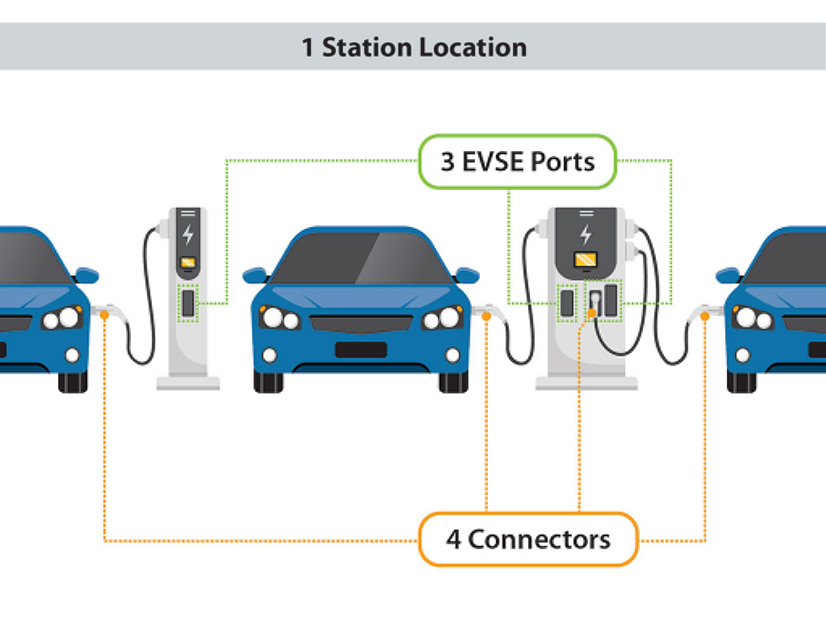
The California Energy Commission and Department of Transportation (Caltrans) are seeking feedback on the structure of the state’s Electric Vehicle Charger Reliability and Accessibility Accelerator (EVC RAA) grant program, designed to replace and repair more than 1,300 chargers at 300 sites statewide.
In January, the U.S. Department of Transportation awarded Caltrans $63.7 million of Infrastructure Investment and Jobs Act funds to develop the program, which sets aside 10% of funds from the National Electric Vehicle Infrastructure (NEVI) Formula Program; $58.4 million is available for solicitation, with the remainder being used for CEC and Caltrans administrative costs.
“The purpose of the EVC RAA program is to repair or replace broken — or not operational — publicly accessible electric vehicle chargers to improve the reliability and accessibility of the existing network,” Emily Belding, zero-emission vehicle infrastructure coordinator at Caltrans, said at a joint CEC and Caltrans presolicitation workshop March 27.
Stations eligible for funding are those listed as “temporarily unavailable” as of Oct. 11, 2023, by the Federal Highway Administration, Belding said. There are more than 3,500 eligible ports in California, and EVC RAA funding will support the repair or replacement of more than 1,300.
Each site must be NEVI-compliant, meaning it should contain a minimum of four Level 2 or DC fast-charging ports. At sites located within 1 mile of a designated alternative fuel corridor, chargers must deliver at least 150 kWh of power. (See Calif. Looks to Streamline Process for Issuing NEVI Funds.)
Additionally, EVC RAA is part of the federal Justice40 Initiative, meaning at least 40% of eligible ports must be in communities marginalized by underinvestment or overburdened by pollution, and a minimum of 50% of deployed chargers must be in disadvantaged or low-income communities in general.
For replacement projects, CEC is estimating it will cost $12,500 for Level 2 ports — those able to offer at least 6 kW of continuous power delivery — and $300,000 for DCFCs, said Ben De Alba, zero-emission vehicle infrastructure specialist at CEC. The agency will not award more than the cost per port for replacement projects.
Eligible applicants must be private entities, including EV charging and service providers, third-party installers, and charging station operators. Ineligible projects include those for which costs would exceed the cost to replace the broken or nonoperational equipment, EV chargers currently under warranty or an existing service-level agreement, and those that don’t meet the definition of “publicly available.”
Projects must be completed in 12 months, and because of the limited time frame, funds cannot be used for operations and maintenance. Chargers must maintain an average uptime of 97% over five years, and applicants are required to submit a five-year operations and maintenance plan.
CEC and Caltrans will score each application on factors including project readiness, the benefit to Justice40 communities and cost effectiveness.
John Schott, director of public-private partnerships with ChargePoint, questioned the decision to limit eligibility for funds to private entities.
“If you look at the list of eligible charging stations, there definitely are some public entities and some cities and towns who have quite a number of broken chargers that I know they’re interested in fixing. So, if they weren’t able to find either an installer, network provider or one of the identified eligible applicants, that certainly might hinder their ability to take advantage of this funding,” Schott said. “I understand your interest in trying to minimize the scope and not have tons of individual grant awards to manage. But I think in the spirit of this federal solicitation and really trying to fix those broken chargers out there, I would respectfully request that you would reconsider that.”
Comments on the EVC RAA program structure are due April 15. The solicitation is expected to be released in August, and applications are due in September.
“This has been a very complex program from the start,” De Alba said. “We’re moving as quickly as we can to award the funds and get these stations repaired or replaced.”
